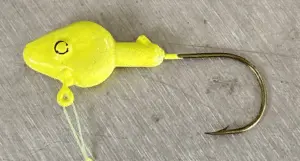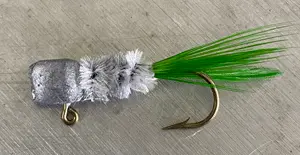WE ARE YOUR SOURCE FOR FISHING DESTINATIONS IN ALABAMA!
National Champion Eric Cagle Reveals How To Find Crappie
By Eileen Davis
Lake Martin crappie guide Eric Cagle of Tallassee has amassed an impressive string of wins on the tournament trail during the last two years. He has four major victories by winning three state championships and a national championship. Additionally, of six Alabama Chapter Crappie Masters tournaments this year, Cagle won the first five and finished third in the last one.
As cold fronts announce the transition of seasons, Cagle said late fall fishing on Martin begins in late October and ends in early December.
“During late fall,” Cagle said, “the fish are moving to structure at depths of 15 to 25 feet. Look for fish on submerged brush piles and Christmas trees. If their tops are deep enough, lay downs on the bank will also hold fish as will bridge pylons.
“Bridge pylons are really good in late fall and there are a lot of bridges on Lake Martin.”
Bridges are popular with anglers. The algae that collects on the concrete pylons attract baitfish, which in turn pulls in crappie. The pylons also provide a current break.
While bridge pylons may be the most obvious man-made places to find fish, it’s not where Cagle wins tournaments.

Cagle said one of the best lures to use in Lake Martin’s clear water is a Muddy Water bait in blue milk rigged on a head made by Skipper’s Jigs.
How to Find and Fish Brush Piles
Here is Cagle’s advice on how to find fish on Lake Martin’s 40,000 acres, and it is how Cagle finds fish on new water using Humminbird side scan sonar with their Lakemaster map card.
“Set your sonar to scan 100 feet on both sides of your boat,” he said. “When you find two pieces of cover holding fish around the same depth, then that is the depth to search. Highlight the depth range on the map, so you can easily search productive water.
“For example, on Lake Martin in late fall, highlight the depth range of your map to appear in green at depths of 15 to 25 feet. Stay in the green shaded area as you search. To narrow your search further, scan creek bends, points, humps and creek-river intersections within the green shaded area. That is how I find all of my fish.”
Finding brush piles require effort. Of course, it’s not a problem for this guide on Lake Martin. Over the years, Cagle has sunk more than 280 brush piles, so he always has productive cover for his clients to fish.
Bush pile locations are also available for download on the Alabama Power Shorelines website. Since 1993, Alabama Power has sunk more than 60,000 Christmas trees in company reservoirs.
Once Cagle finds fish, he throws a marker buoy beside the brush pile. Depending on the depth of the fish, he selects either a 1/32-, 1/16- or 1/8-ounce Skipper’s Jig head rigged with a Muddy Water bait and fished on 6-pound-test K9 fluorocarbon line in hi-vis yellow.
“Skipper’s jigs have light wire hooks,” he said, “so the hook will bend when you get hung in the brush. One of the best plastics to use in Lake Martin’s clear water is a Muddy Water bait in blue milk or any shad color. Black crappie are the predominant species on Martin and they like small baits. So cut the bait down to 1 1/2 to 1 3/4 inches. Small hair jigs are also effective.
If you are going to fish with minnows, use the smallest minnow you can find.”
When approaching the brush pile, Cagle’s makes his first few casts from 40 feet. It that doesn’t work, he will drop the jig vertically into the cover.

Another lure Cagle relies on to catch crappie is a hair jig made by Limits Tackle.
LiveScope Revelations
Garmin Panoptic LiveScope gives anglers the ability to see fish swimming, see fish attack your lure and see it all in real time. It even shows you 3-D images of fish and structure around your boat. It is an important tool.
“We now know things about crappie behavior that we never knew before,” Cagle said. “You can tell how crappie react to a bait moving slow, moving fast or vertically.
“Before LiveScope, we would fish a spot, catch 10 fish, and they would stop biting. We would say that we either caught them all or that they have stopped biting. Now that we can see those fish, we know they sometimes go down and bury in the brush. If you stay there, they will come back up, suspend, and you can catch them again.
“In late fall and winter, if you catch a few fish, the school will follow those fish. They will roam for a little while, and then, they will return to the brush. Before, we would leave, now if you are patient, you can actually catch more fish.
“I love fishing Lake Matin in late fall and winter. This time of the year, there are bush piles with 200 to 300 fish on them.”
Eric Cagle also guides on the Alabama and Coosa rivers.
Read more about how successful anglers find and catch Bama’s fish.
From April 1 to July 4, anglers are invited to fish on Lake Martin and take a chance at catching a tagged bass worth one million dollars or others worth $1,500, two boats, or a truck. To win, you must first register. Learn more at How To Catch The Million Dollar Bass Swimming in Lake Martin.
PLEASE SHARE

